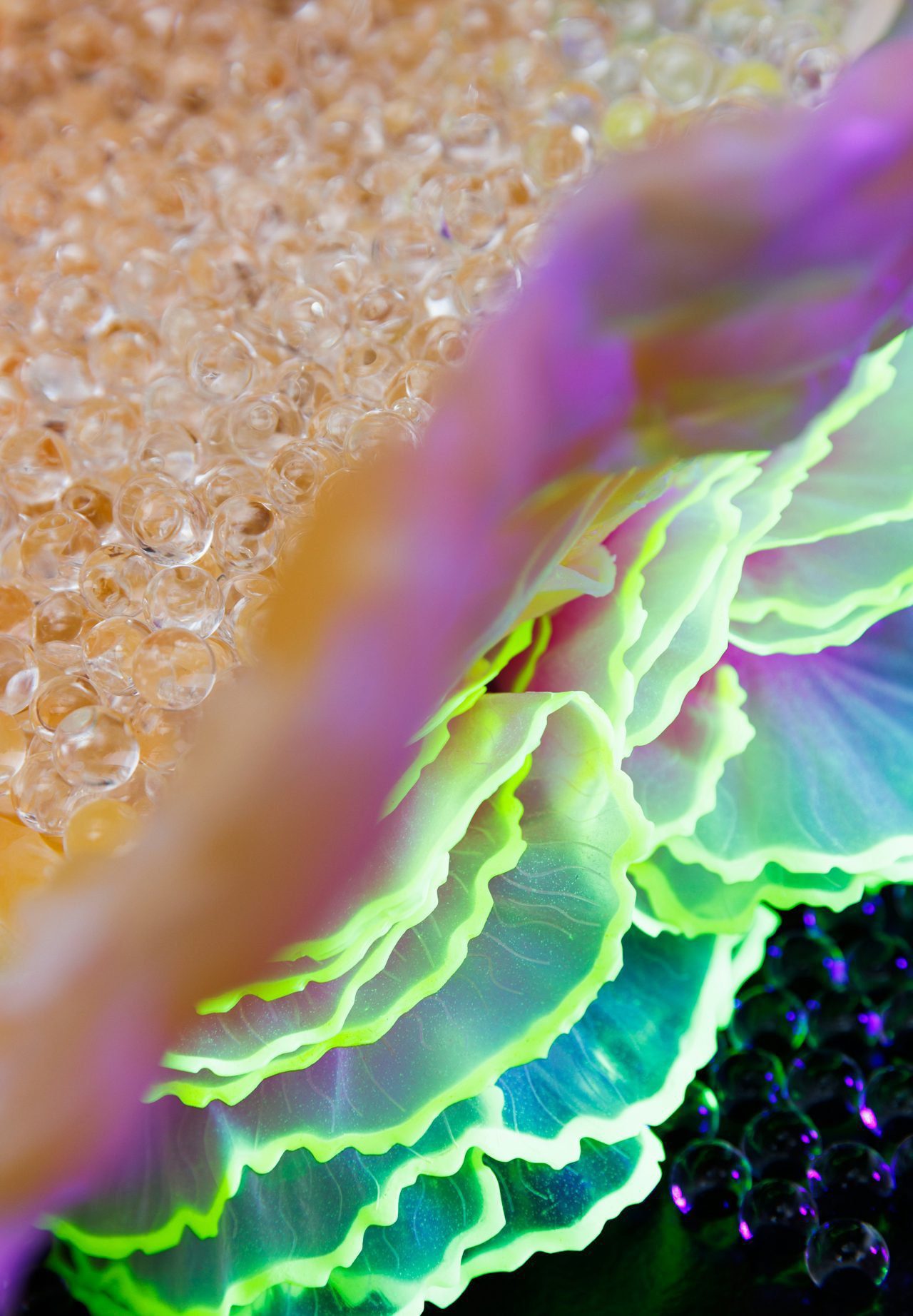Once upon a time, the villain in the climate story was a plastic straw. The most visible emblem of waste culture—small, disposable, and jammed into the nostrils of sea turtles in countless viral images—it became public enemy number one. But as with most things, the truth is messier than a paper straw in a hot drink.
While bans on single-use plastics like straws, stir sticks, and cutlery were a meaningful start, they were never meant to be the whole story. The fight has evolved—and fast. Today, the conversation has shifted toward a more urgent and systemic demand: the total reimagining of packaging and consumer goods, with Gen Z leading the charge.
The Canadian Ban: What It Was (And Wasn’t)
In 2022, the Canadian federal government introduced a phased ban on six types of single-use plastics: checkout bags, cutlery, foodservice ware made from problematic plastics, ring carriers, stir sticks, and straws. By the end of 2023, the sale of most items was banned, with exports to follow in 2025. The legislation, implemented under the Canadian Environmental Protection Act, was heralded as a bold move. It wasn’t perfect—but it was progress.
Yet the ban’s days may be numbered. Conservative leader Pierre Poilievre has pledged to reverse the legislation if elected, calling it an unnecessary burden on businesses and consumers. This campaign promise is especially concerning in the context of Canada’s current federal election cycle, where climate concerns should be a top priority. Reversing progress now—especially when consumers and businesses have largely adapted to sustainable alternatives—would be an illogical and costly step backwards.
What’s Actually in Most Packaging?
Packaging is the silent monster in the room. Globally, over 141 million tonnes of plastic waste were generated in 2019. Nearly half of it came from packaging—most of it designed to be used once, then tossed.
Most commercial packaging is made from synthetic polymers such as:
-
Polyethylene (PE) – used for plastic bags and wraps
-
Polypropylene (PP) – found in yogurt tubs, takeaway containers
-
Polystyrene (PS) – used in foam takeout boxes, cups, and insulation
-
Polyethylene Terephthalate (PET) – found in clear plastic bottles and food containers
These materials are petroleum-based, energy-intensive to manufacture, and often toxic during decomposition. Plastics don’t break down in any meaningful sense—they break apart, turning into microplastics that pollute oceans, soil, and even human bloodstreams. The carbon footprint of their manufacturing process is also staggering. By 2050, emissions from plastic production and incineration could reach 2.8 gigatons annually.
Moral License and the Straw Distraction
The backlash against plastic straws created a cultural moment, but also a convenient distraction. It’s a textbook example of “moral license”—the idea that symbolic environmental actions allow individuals and corporations to feel good without making meaningful change.
Paper straws became the go-to replacement, but their production emits significantly more CO2 than plastic straws. Better options—like reusable metal, bamboo, or silicone—are widely available, and Gen Z has adopted them with enthusiasm. But even the best straw won’t save us from the tidal wave of over-packaging still dominating store shelves.

The Real Crisis: Packaging Waste and Its Afterlife
In Canada, 49.4% of plastic waste comes from packaging. Most of that is plastic film—shopping bags, shrink wrap, and multilayer packaging that’s almost impossible to
recycle. A 2021 report found that less than 9% of Canada’s plastic waste is actually recycled. The rest ends up in landfills, incinerators, or worse—oceans and waterways.
The U.S. has fared even worse. As of 2021, only about 5% of its plastic waste was successfully recycled, with over 85% ending up in landfills. Globally, recycling systems are failing to keep up with the sheer volume of plastic waste being generated.
And then there’s the packaging lifecycle: from oil extraction to production, distribution, and disposal. Each stage emits greenhouse gases, releases toxins, and impacts water and soil quality.
Gen Z Isn’t Buying It—Literally
Gen Z doesn’t just want better options—they expect them. Studies show that this generation is making values-based purchases more than any before it:
-
72% have changed their behaviour to reduce their environmental impact
-
62% prefer to shop from sustainable brands
-
73% are willing to pay more for ethically sourced goods
-
22% have actively boycotted brands over unsustainable practices
Retailers have noticed. From fashion to food, companies are being forced to overhaul their packaging and sourcing practices. Brands like Lush and The Body Shop have invested in refill programs. Retail chains like Loop offer reusable containers for everyday products. Even fast food giants are testing reusable packaging systems.

The Rise of Ethical Retail
Retailers are now rethinking everything from label adhesives to filler materials. Consumers are scrutinizing not just what’s in the product, but what it came in. Innovations in compostable packaging, reusable containers, edible wraps, and plant-based bioplastics are slowly scaling up.
Still, there’s a long way to go. Most so-called “green” packaging solutions come with caveats: bioplastics may only break down in industrial composters; paper-based packaging may require more water and emit more CO2 to produce. Responsible packaging isn’t just about the material—it’s about lifecycle, logistics, and actual end-of-life outcomes.
Responsible Consumerism Isn’t a Trend—It’s a Mandate
For Gen Z, ethical consumerism isn’t a seasonal marketing ploy. It’s a mandate. This generation is demanding transparency, circular economies, and shared accountability from corporations and governments alike. And it’s working. Companies are changing. Laws are shifting. Even investors are paying attention.
But it’s not just on brands. Governments play a critical role. Canada’s single-use plastics ban may have been imperfect and under threat, but it sent a signal. It marked a cultural shift toward accountability. If that momentum is lost due to political backpedaling, it won’t just delay progress—it could reverse it.
From Plastics to Policy
Lifting the plastics ban, as the Conservative Party has pledged to do, would be a huge step backwards—both symbolically and systemically. It reinforces outdated notions that environmental policy is a burden rather than an investment. It signals to industries that convenience still trumps conscience.
That kind of thinking is exactly what got us here. It’s also eerily familiar to the Trump-era rollback of over 100 U.S. environmental protections. From slashing emissions rules to gutting clean water acts, the playbook is clear: prioritize profit over planet, short-term gain over long-term survival.
The Most Immediate Environmental Threats Facing Youth
-
Microplastics in blood, lungs, and placentas
-
Food and water insecurity due to climate-fueled droughts and floods
-
Wildfires and air pollution creating lifelong respiratory conditions
-
Mass extinction and biodiversity collapse
-
Climate anxiety—now a clinical phenomenon among youth worldwide
These aren’t abstract dangers. They’re unfolding now, and young people are inheriting every bit of it.
Meet the Climate Avengers: Young People Driving Change
 Autumn Peltier (Canada)
Autumn Peltier (Canada)
Chief Water Commissioner of the Anishinabek Nation, Autumn has been a fierce advocate for Indigenous water rights since she was eight years old. She’s spoken at the United Nations, met with world leaders, and continues to fight for clean water access in Indigenous communities across Canada. Follow her work at @Autumn.Peltier.
 Aliénor Rougeot (Canada)
Aliénor Rougeot (Canada)
Lead organizer for Fridays for Future Toronto, Aliénor has helped mobilize thousands of students in Canada’s largest city. She champions climate policy reform, social justice, and economic transformation. Learn more about her work at @alienor_rougeot and fridaysforfutureto.org.
 Greta Thunberg (Sweden)
Greta Thunberg (Sweden)
Founder of the school strike for climate movement, Greta has become the face of youth climate action around the world. She speaks truth to power with relentless clarity and has inspired millions to demand action. Follow her updates at @gretathunberg and at FridaysForFuture.org.
 Vanessa Nakate (Uganda)
Vanessa Nakate (Uganda)
Founder of the Rise Up Climate Movement, Vanessa is a leading voice for African climate justice. She uses her platform to highlight how climate change disproportionately affects communities in the Global South. Read her work and advocacy at @vanessanakate1 and riseupmovementafrica.org.
 Xiye Bastida (Mexico/US)
Xiye Bastida (Mexico/US)
An Indigenous Mexican climate activist and co-founder of the Re-Earth Initiative, Xiye advocates for decolonizing climate narratives and amplifying Indigenous solutions. You can follow her activism at @xiyebeara and reearthinitiative.org.
 Leah Namugerwa (Uganda)
Leah Namugerwa (Uganda)
Known for her birthday tree planting campaign and her work on Uganda’s plastic bag ban, Leah is a key member of Fridays for Future Uganda. She proves that climate leadership starts young. Follow her at @NamugerwaLeah and through Fridays For Future Uganda.
 Licypriya Kangujam (India)
Licypriya Kangujam (India)
One of the world’s youngest climate activists, Licypriya founded The Child Movement to demand climate legislation that protects future generations. She has addressed global leaders since the age of 9. Learn more at @LicypriyaK and thechildmovement.com.
 Jerome Foster II (USA)
Jerome Foster II (USA)
A member of the White House Environmental Justice Advisory Council and founder of OneMillionOfUs, Jerome works to empower youth to vote and take political action on climate justice. Follow his work at @JeromeFosterII and onemillionofus.com.
Activating the Silent Majority: The Social Tipping Point of Climate Action
Incorporating new insights from Damian Carrington’s April 2025 Guardian article “Activating the Silent Majority to Fight Climate Change,” we can now see that the fight against climate collapse isn’t just about products or politics—it’s about perception.
A global survey of 130,000 people across 125 countries (accounting for 96% of global carbon emissions) revealed a shocking gap: 89% of people want stronger climate action from their governments, but most believe only a minority feel the same. This massive perception gap—the belief that others don’t care—leads to self-censorship, inaction, and silence.
It’s what social scientists call a “spiral of silence.” And it’s one we desperately need to disrupt.
Psychologist Teodora Boneva, whose team conducted the original donation-based experiments behind this data, proved that simply telling people how many others support climate action can boost willingness to act. In one U.S.-based trial, just learning that 79% of peers valued climate action caused participants to donate an average of $16 more to green charities.
Globally, people in China, the UAE, and even oil-producing Saudi Arabia showed overwhelming support for action, with many willing to give up 1% of their income to fight climate change. In North America, support is still strong—but muted by misperceptions and polarizing media narratives.
What does this mean? It means we’re not alone—and never were. The silent majority is real. And sharing that fact loudly and frequently might just be the cultural spark we need to hit a climate tipping point.
Social norms matter. Studies show that people are more likely to act when they know others are doing the same. We’re social creatures, influenced by perceived norms more than we realize. Breaking the illusion that climate action is unpopular helps create a positive feedback loop—each person emboldened by the last.
And yes, misinformation is part of the problem. Fossil fuel lobbyists have spent decades weaponizing confusion and cynicism to keep people divided. But new campaigns built on truth and solidarity—like the 89 Percent Project and the UN’s People’s Climate Vote—are showing that global cooperation isn’t just idealistic. It’s already what people want.
As Professor Anthony Leiserowitz of Yale put it: “We’re sitting on an enormous potential climate movement. It’s latent. It hasn’t been activated.”
Revolutionary Innovations in Sustainable Packaging
As demand for greener options grows and public awareness reaches a tipping point, innovation in sustainable packaging is accelerating at breakneck speed. Here are some of the most exciting breakthroughs reshaping the future of consumer packaging:
1. Seaweed-Based Packaging (Notpla)
Using fast-growing seaweed, London-based startup Notpla creates packaging that is fully biodegradable and even edible. From takeaway containers to water pods, their products offer a zero-waste solution that decomposes naturally in a matter of weeks.
2. Mushroom Mycelium Foam (Ecovative)
Ecovative grows packaging from agricultural waste bound by mycelium—the root structure of mushrooms. It’s compostable, durable, and an effective alternative to polystyrene.
3. Biodegradable Plastics with Controlled Degradation (Polymateria)
Polymateria has developed “biotransformation” technology that ensures plastic breaks down safely in the natural environment without leaving microplastic residue. It’s designed to maintain product integrity during use and degrade after disposal.
4. Plant-Based Bioplastics (Footprint, NatureWorks)
Companies like Footprint and NatureWorks are using corn starch, sugarcane, and bamboo to create compostable packaging for food, cosmetics, and e-commerce. Unlike traditional plastics, these materials come from renewable sources and are designed to break down under industrial composting conditions.
5. Edible Films and Wrappers (Loliware, WikiFoods)
Loliware creates seaweed-based straws and edible utensils, while WikiFoods has developed skins for yogurts and fruits. These innovations offer an imaginative solution: zero waste because the packaging becomes part of the product.
6. Reusable Delivery Platforms (Loop)
Loop partners with major brands like Nestlé and Unilever to deliver household products in reusable containers. Consumers return empties for sterilization and reuse, drastically reducing single-use waste.
7. University Research Labs (Clemson, MIT)
Institutions like Clemson University are leading the charge with entire research centres dedicated to compostable and smart packaging solutions. These labs partner with brands to prototype real-world alternatives to plastic.

These Innovations Prove One Thing: The Future of Packaging Doesn’t Need to be Built on Oil
Now more than ever, as we prepare to vote in a federal election that may decide whether Canada continues its move toward a circular economy or retreats to petro-state politics, we need to remind each other that the majority of us want progress. Not just for Earth Day. For every day.
The next frontier? Making sure everyone else knows it. The fight against single-use plastics was a door. Gen Z walked through it—and now they’re flipping the whole table. They know the problem isn’t just what’s on the shelves, but how those shelves got filled in the first place. It’s about overproduction, capitalist excess, and supply chains that treat the planet like an infinite resource.
Young people aren’t asking for less—they’re demanding better. Less plastic, yes—but also:
-
Better systems of reuse
-
Better policy enforcement
-
Better corporate accountability
-
Better investment in circular economies
-
Better education about what truly sustainable packaging looks like
What Can You Do?
- Get informed: Follow real science, not influencers
-
Say no to over-packaging and single-use items whenever possible
- Shop better: Buy less, thrift more, support BIPOC and eco-conscious brands
-
Support local refill shops and ethical retailers like Nada, The Soap Dispensary, or Unboxed Market
-
Join environmental advocacy groups such as Environmental Defence, Surfrider Foundation, or Ecojustice
- Sign petitions and support legal actions (like those led by David Suzuki Foundation)
-
Ask questions about packaging materials and end-of-life options
-
Use your platforms to call out greenwashing and demand better
-
Vote for leaders and parties with real climate platforms—especially during this federal election
- Speak up: In classrooms, boardrooms, and at dinner with your uncle who still thinks climate change is a “debate”
Earth Day Is Not a Throwback
Let’s be real—Earth Day used to mean planting a tree. Now it means fighting to stay alive.
It’s not enough to care once a year or recycle when it’s convenient. It’s about changing the story—about refusing to accept a system built on extraction, waste, and denial. It’s about asking hard questions and refusing easy answers. It’s about wielding your influence like a sword, whether that’s in your wallet, your vote, or your voice.
And yes, it’s still about bringing your reusable bag.
Our Environmental Commitment
At She Zine Mag, we take our environmental responsibilities seriously. We use recycled and recyclable materials whenever possible in our packaging, minimize print runs, and actively offset our carbon footprint through tree planting initiatives, water justice initiatives, and carbon offset partners. We disclose our use of AI tools and prioritize transparency, digital sustainability, and climate-conscious publishing. We’re not perfect, but we’re trying—because this planet is non-refundable.
This Earth Day, let’s stop congratulating ourselves for bringing our own bags. Let’s start demanding a world where that’s not even necessary—because the system itself has changed.
The war on plastic straws may have made headlines. But the battle for the planet is so much bigger. And Gen Z? They’re just getting started.
We’re going to be revisiting this topic in future posts. Are you an entrepreneur who sells physical products? Tell us about how you’re make eco-smart decisions for your business!

AXO (she/her) is a multidisciplinary creator, editor, and builder of feminist media ecosystems based in Toronto. She is the founder of She Zine Mag, Side Project Distro, BBLGM Club, and several other projects under the AXO&Co umbrella — each rooted in DIY culture, creative rebellion, and community care. Her work explores the intersection of craft, technology, and consciousness, with an emphasis on handmade ethics, neurodivergent creativity, and the politics of making. She is an advocate for accessible creativity and the power of small-scale cultural production to spark social change. Her practice merges punk, print, and digital media while refusing to separate the emotional from the practical. Above all, her work invites others to build creative lives that are thoughtful, defiant, and deeply handmade.

























